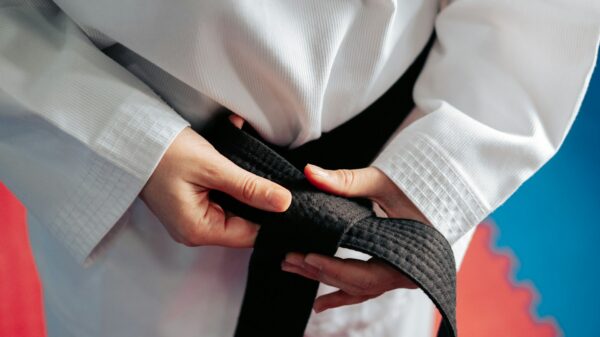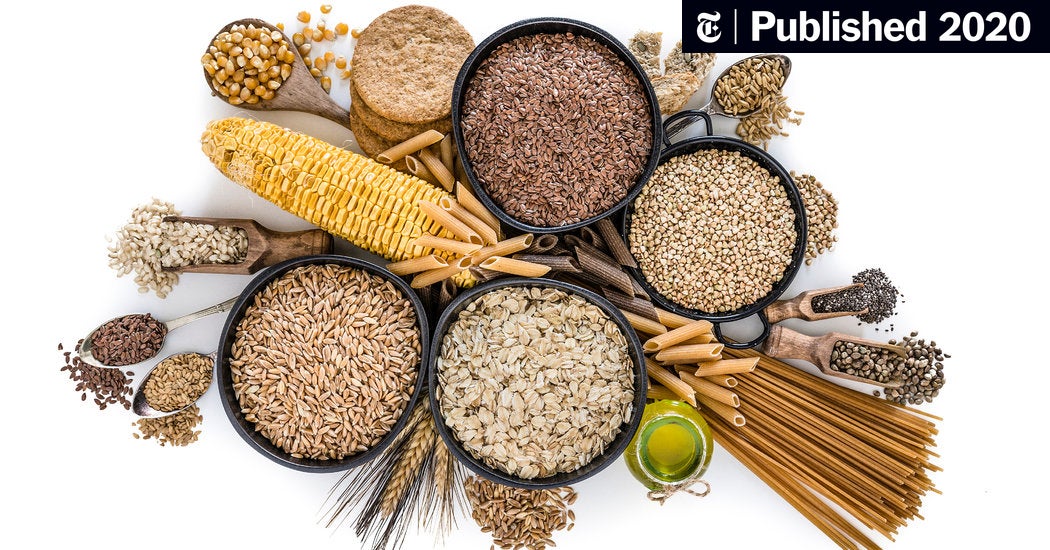There are several reliable ways to identify whole-grain foods.
Q. I find all of the labels on food products overwhelming in-store. I know I should be eating whole grains, but what should I look for when in the grocery aisle?
A. Nutrition experts recommend that adults aim to eat 48 grams, or three servings, of whole grains per day. Whole grains are high in fiber and other nutrients; as part of a healthy diet, they have been tied to a lower risk of heart disease, Type 2 diabetes, obesity and other health issues. Common examples of a serving include a slice of 100 percent whole-grain bread, a half cup of oatmeal, or a half cup of cooked brown rice.
Unfortunately, you won’t find whole-grain servings listed on the Nutrition Facts panel on packaged foods. But there are a few reliable ways to identify whole-grain foods.
First, you can look on food packages for the whole grains stamp, created by the Oldways Whole Grains Council, a consumer advocacy group.
“We created the whole grains stamp in 2005 because we knew how challenging it could be to identify products that contain significant amounts of whole grain and wanted to give consumers an easy tool that they could use to locate whole grain items when shopping,” said Caroline G. Sluyter, program director of the Whole Grains Council.
With its characteristic yellow background and perforated edges that resemble a postal stamp, the whole grains stamp comes in three versions, with decreasing levels of whole grains:
-
100 Percent Whole Grain: Of the grain in the product, all of it is whole grain. Must have a minimum of 16 grams per serving, which is equivalent to one serving of whole grains.
-
50 Percent Plus Whole Grain: Of the grain in the product, at least half is whole grain. Must have a minimum of 8 grams per serving, equivalent to a half serving of whole grains.
-
Whole Grain: Of the grain in the product, less than half is whole grain. These foods also must provide at least 8 grams of whole grains per serving, but proportionally it might contain more refined grain than whole.
The Whole Grains Council has approved use of the stamp for over 13,000 products in 61 countries. But not all whole-grain products use the stamp, and not all whole-grain products, including those found in the bulk section, come in packages.
Another good way to ensure there’s a significant level of whole grain in a product is to check whether the first (or at least the second) ingredient in the ingredients list is a whole grain. Ingredients are listed in descending order by weight, so the first one is particularly important.
Whole grains are made of three main components: the bran and the germ, which are the most nutritious parts, as well as the endosperm. Whole grains retain all three components, so they are eaten intact (such as oats) or milled in a way that retains all three parts (such as whole-wheat flour).
Two types of grain are virtually always whole: brown rice and oats. Ancient grains like quinoa and amaranth are very rarely refined so are a solid bet as well.
In most other cases, you’ll want to look for the word “whole” in front of the grain, Ms. Sluyter said. Even grains like sorghum and farro may not necessarily be whole since they are frequently pearled. This means that manufacturers polish off the outer bran layer, in order to make a product that cooks faster. Checking for the word “whole” is especially important in the case of “whole wheat,” such as in bread, or “whole grain corn,” such as in tortillas, since wheat and corn are so often refined. (Popcorn, though, is an automatic whole grain, since the entire kernel gets popped.)
Another good strategy when looking to get your whole grains is to see if the front of the package notes the number of grams of whole grains or the percentage (ideally 100 percent, such as “100 percent whole wheat”).
Labels to ignore when hunting for whole grains:
-
Multigrain: It could mean a mix of whole grains, a mix of refined grains, or some amount of each. Since the label alone doesn’t specify, it’s best not to rely on this term.
-
Made with whole grain: Again, too ambiguous. This label doesn’t set any threshold for how much of the grain is whole, so it could be just trace amounts.
-
Stone-ground: Like “multigrain,” this label doesn’t tell you anything about whether the grains are whole or refined. It’s about the type of mill — in this case, two big stones grinding together, as opposed to more common steel roller mills — used to make the flour.
-
Organic: The organic label applies to farming and production practices and doesn’t tell you whether a product contains whole grains.
Certain additional words and phrases are a tipoff that the product is not whole grain: “wheat flour” without the word “whole” in front of it; “enriched flour”; or, when an ingredient indicates that one of the main parts of the grain is missing, such as “degerminated corn meal.”
The Dietary Guidelines for Americans advises that you make sure at least half of the total grains you eat each day are whole. Now that you know what to look for, the best strategy may be to make whole grains your default.
Do you have a health question? Ask Well
Sophie Egan is the author of “How to Be a Conscious Eater: Making Food Choices That Are Good for You, Others, and the Planet.”


























